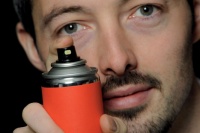Cambridge engineers investigate propellant-free aerosols
A novel concept based around the use of superhydrophobic materials could lead to the development of propellant-free impact aerosols.
Engineers at Cambridge-based 42T are investigating an aerosol technology that has the potential to eliminate pressurised propellants from personal and household aerosol canisters.
Conventional aerosol cans contain both a propellant and any number of products such as a deodorant or insect repellent. When a small valve on the canister is depressed, the high-pressure propellant gas forces both the propellant and small droplets of product out through a nozzle.
Many types of propellant have been used by aerosol manufacturers over the years. These include chlorofluorocarbon (CFC), hydrochlorofluorocarbon (HCFC) and hydrofluorocarbon (HFC), as well as other volatile organic compounds (VOCs) such as butane.
However, as a result of concerns about their impact on the ozone layer, the use of both CFCs and HCFCs is to be totally abolished in accordance with the Montreal Protocol, leaving HFCs and VOCs as the only alternative options.

Register now to continue reading
Thanks for visiting The Engineer. You’ve now reached your monthly limit of premium content. Register for free to unlock unlimited access to all of our premium content, as well as the latest technology news, industry opinion and special reports.
Benefits of registering
-
In-depth insights and coverage of key emerging trends
-
Unrestricted access to special reports throughout the year
-
Daily technology news delivered straight to your inbox










UK Automotive Feeling The Pinch Of Skills Shortage
Aside from the main point (already well made by Nick Cole) I found this opinion piece a rather clunking read: • Slippery fish are quite easy to...